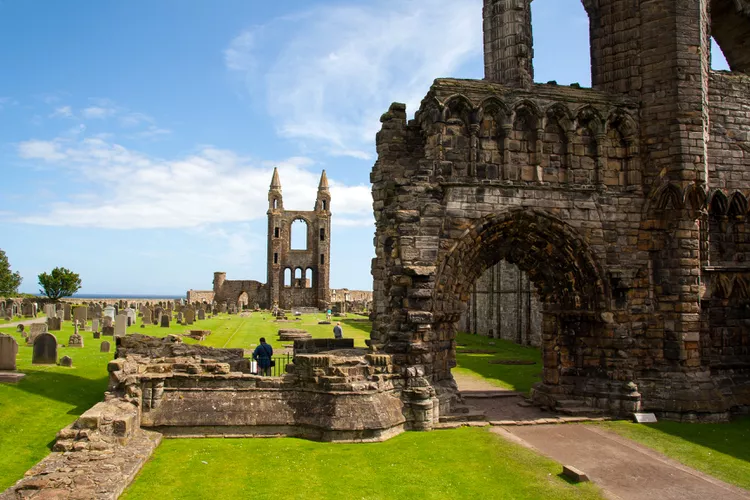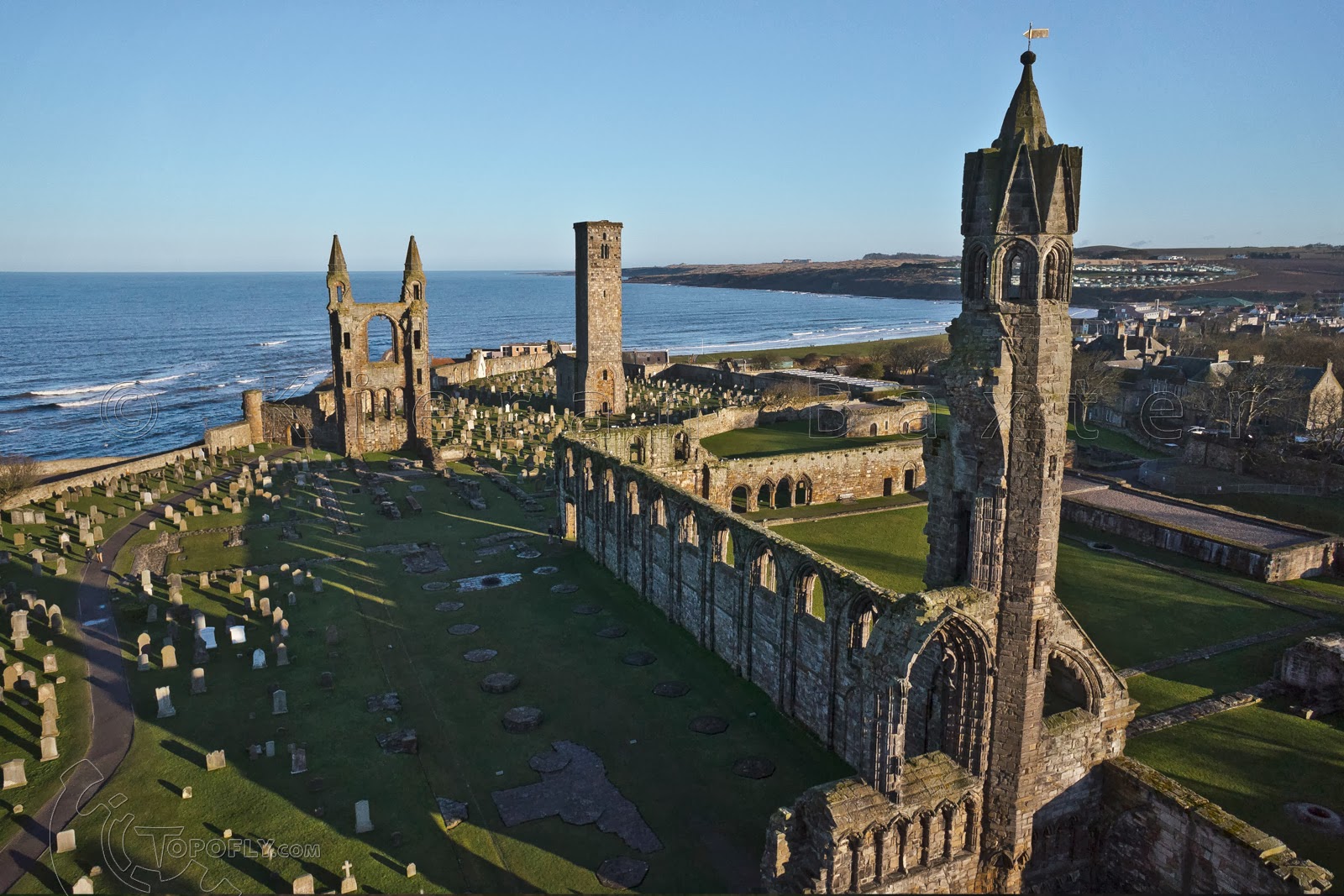By Maria Papagiannopoulou,
St. Andrew’s Church, nestled in the heart of Scotland, stands as a testament to centuries of spiritual significance and architectural beauty. With roots dating back to ancient times, this revered place of worship has played a pivotal role in the religious and cultural history of Scotland.
The history of St. Andrew’s Church is intricately tied to the ancient town of St. Andrews, located on the east coast of Fife. Legend has it that the relics of Saint Andrew, one of the twelve apostles of Jesus, were brought to this coastal town in the 4th century. The establishment of a church dedicated to Saint Andrew followed, becoming a focal point for Christian worship and pilgrimage.
The medieval St. Andrew’s Cathedral, which once stood adjacent to the church, was a grand structure that dominated the ecclesiastical landscape. Constructed in the 12th century, the cathedral served as the center of the Scottish Catholic Church for centuries. However, the turbulent times of the Scottish Reformation in the 16th century led to the cathedral’s decline and eventual ruin.
In the aftermath of the Reformation, St. Andrew’s Church emerged as a reformed and enduring institution. The present church structure, often referred to as St. Andrew’s Cathedral, is a testament to architectural resilience. Though not as expansive as its medieval predecessor, the church maintains a distinctive charm, reflecting both Gothic and Romanesque influences.
St. Andrew’s Church boasts notable features that captivate both historians and visitors alike. The picturesque ruins of the medieval cathedral, the enduring tower, and the sacred relics associated with Saint Andrew contribute to the site’s cultural and religious significance.

Over the centuries, St. Andrew’s Church has not only been a place of worship but also a cultural beacon. It has witnessed historic events, royal ceremonies, and countless pilgrimages, leaving an indelible mark on the cultural fabric of Scotland.
While I can’t provide specific references, consider consulting authoritative books on Scottish history, ecclesiastical history, or local histories of St. Andrews. Academic journals, historical records, and the official website of St. Andrew’s Church can also be valuable resources for more detailed information.
St. Andrew’s Day, celebrated on November 30th, holds special significance in Scotland as the national day dedicated to the patron saint of the country, Saint Andrew. Although St. Andrew’s Day is not recognized as a public holiday in Scotland, it is celebrated through a variety of cultural, social, and festive activities. Here are some of the celebrations that Scottish people typically engage in on St. Andrew’s Day:
Flag Flying:
One of the most visible symbols of St. Andrew’s Day celebrations is the Saltire, the Scottish flag. Many public buildings, businesses, and homes fly the Saltire to honor the patron saint.
Traditional Scottish Food:
Scots often celebrate with traditional Scottish dishes. Haggis, neeps (turnips), and tatties (potatoes) may find their way onto dinner tables, along with other traditional fare like Scottish salmon.
Concerts and Performances:
Many communities host concerts, performances, and ceilidh dances to celebrate St. Andrew’s Day. These events often feature traditional Scottish music, dance, and storytelling.
Community Events:
Local communities may organize parades, festivals, or markets in celebration of St. Andrew’s Day. These events often showcase Scottish culture, crafts, and local talents.
Church Services:
Given St. Andrew’s status as the patron saint of Scotland, some people attend church services to mark the day. These services may include special prayers, hymns, and readings.
Educational and Cultural Activities:
Schools may incorporate lessons and activities related to Scottish history and culture on St. Andrew’s Day. This can include learning about the life of St. Andrew, exploring traditional Scottish customs, and engaging in arts and crafts.
Charitable Activities:
St. Andrew’s Day is sometimes associated with acts of kindness and charity. People may choose to contribute to charitable causes or volunteer in their communities as a way of commemorating the saint’s legacy.
Lighting Up Landmarks:
Some landmarks and monuments may be illuminated with blue and white lights to honor St. Andrew and showcase Scottish pride.
Family Gatherings:
Like many holidays, St. Andrew’s Day is an opportunity for families to come together. Whether for a festive meal, sharing stories, or participating in local events, families often use the day to strengthen bonds.
While the celebrations on St. Andrew’s Day can vary across Scotland, the common thread is a sense of national pride, community spirit, and a celebration of Scottish heritage and identity.
St. Andrew’s Church in Scotland stands as a living testament to the enduring spirit of faith and history. As a place that has weathered the tides of time, it continues to inspire awe and reverence, inviting both locals and visitors to appreciate its historical, cultural, and spiritual significance in the tapestry of Scotland’s rich heritage.
References
- The History of St Andrews Castle & Cathedral | The Ardgowan Hotel. (2023).Available here
- St. Andrews History, Historic environment. Available here




